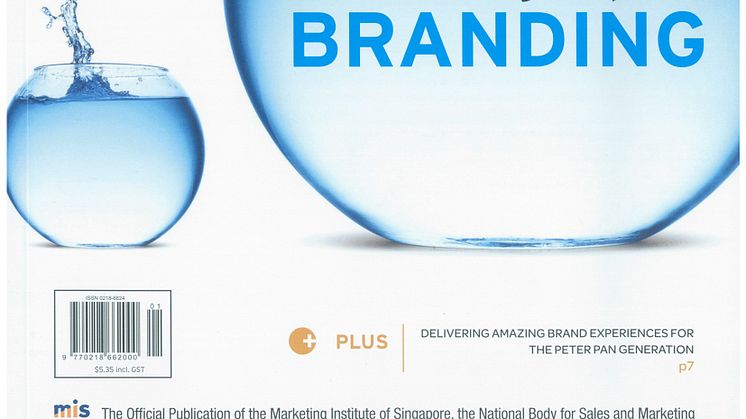
Blog post -
Producing brand enhancing content marketing videos
Even as some marketers spend tens of thousands of dollars on a detailed branding campaign, they expect a brand-enhancing video to come cheap, or even be free.
It's not that they have to spend a fortune to produce a brand-enhancing content marketing video.
On the contrary – I've also heard of some marketers seriously over-spending for very minor work.
The key is knowing where you can legitimately cut costs, and where investment is required to protect your brand.
So, here is some straight talk.
1. Who will star in your video?
Your sales manager might be the obvious choice to speak on camera – after all, they are likely to know all about your product or service.
But content marketing is, by definition, about producing credible content – not a sales pitch.
Ideally, therefore, your chosen spokesperson or interview guest should be someone who can talk knowledgably and credibly about the subject matter.
So, you might want to carefully select someone from your Research & Development, pre-sales or technology areas to do the talking.
They might not be great orators, but if they can speak cohesively and in an authentic, sincere and credible style, then your audience is more likely to believe what's coming out of their mouths than a sleek sales pitch.
This method supports brand messages founded in credibility and trust.
If you are producing a video in which certain scenes are played out in a choreographed way, that's an entirely different matter altogether.
Unless you operate a drama school, it's unlikely your company hires staff based on acting skills.
So, either provide presentation skills coaching, or hire professional actors.
Consider the alternative: what does it say about your brand if there is bad acting, or a non-sensical or overly salesy pitch to camera?
2. Should they wear make-up?
This might seem extravagant, and it's easy to dismiss hair-styling, make-up and grooming as unnecessary.
But once again, look at your selected presenter or spokesperson under the glare of the studio lights and ask yourself whether this is how you want your brand to be perceived.
Fact is, no one looks immediately presentable on camera when they get out of bed in the morning, and that includes TV presenters.
Which is why TV presenters wear make-up.
And so should your spokesperson.
This includes both male and female presenters. Just because women tend to wear make-up every day doesn't mean she will look good on camera doing her make-up how she usually does it.
Your male presenters might be shy about wearing make-up, but the right make-up artist will make him feel comfortable. In fact, he might even want to leave the make-up on for the rest of the day in the office after the recording is over.
Bottom line: a make-up artist costs surprisingly little to engage, but the difference they make to your production – and therefore the value of the video and your brand – is significant.
3. Should we include music?
Don't say 'yes' straight away. Only include music if you really need it to add emotion to your video. And this really depends on what you are producing the video for.
If you feel a video is too slow without music, then there is something wrong with the video, which music alone can't fix. Perhaps there is a problem with the story flow of the video. A re-edit of the video will likely be required to 'tighten up' the production.
If you really feel the music is necessary, you have two choices.
a.Custom-compose a track. This sounds over-the-top, but it doesn’t cost the earth. Singapore is home to some excellent composers who have produced tracks for global television commercials.
Plus, you can reuse the track for all your productions and have a piece of music you can truly call your own. Think of the four tones that make the instantly-recognisable "Intel Inside" tune, as an example. Powerful branding does not need to be visual alone.
b.Purchase music from a library. This is a cheaper option, but don't expect it to be free.
Royalty-free music is usually only royalty-free if you are a student or charity.
Commercial organisations will likely still have to pay a fee, depending on what you intend to use the video for. If it is for internet usage, the license fee is likely less than if the video is to be broadcast on television.
In either case, there is no such thing as "good, free music", that will enhance your brand.
4. Can we add graphics & animations?
These are very useful tools to enhance your message, to tell your story, and to convey complicated information.
Fortunately for you, there is a broad scope of graphics that you can have created. Some of them cost very little money, but naturally, if you have the budget, you can create some great looking effects.
If you must cut back on the budget of the video, the animation is one area where you have a great deal of flexibility, both in terms of what is delivered, and the price range.
5. Should we shoot on-location or in the studio?
This depends on what you are trying to achieve with your video.
However, what you save in taking crew out on location you will likely have to spend on studio rental.
In any case, here is another area where you can save costs without greatly impacting your production, and where I see the most over-spending taking place.
Fact is, you can produce a great looking video with 1-2 cameramen and a producer. It's unlikely that you will need a six man crew show up in your office for a straight interview shoot.
6. Can't you just add some library footage?
Yes, of course you can.
But good library footage doesn't come cheap, especially if you are looking for material which enhances the brand positioning of your video.
If the library footage you need shows buildings or landmarks in your home market, it may be cheaper to have it filmed by your crew, rather than buying it in.
For everything else, either set aside budget for library footage, or don't use any at all.
7. Our video needs a narrator.
No, probably not.
This comes back to music – if you need one, it's a warning sign that the pictures themselves don't tell the story sufficiently well.
This is not the same as an interviewer, who helps draw out information from your chosen spokesperson.
Sometimes people are able to articulate themselves better in the flow of a conversation, than when they have to say something of value to a camera without prompting.
8. We need a teleprompter.
This is another warning sign.
You should almost never need a teleprompter.
First, your on-camera presenter or spokesperson should be able to present the information without having to read from a script. If they are not sufficiently researched on the subject matter, chances are they are not the right presenter for your brand-enhancing video.
Second, reading from a prompter takes more skill, not less. It's not easy to read from a prompter and present naturally, because you don't have the peripheral vision to "read ahead", which is so important to make your intonation and inflection sound natural.
If you are not used to reading for a prompter, and you don't do it every day, now is not the time to start.
Save yourself the money on the prompter.
Better for your spokesperson to be well-prepared with what you wish to communicate, and for him or her to deliver their comments naturally.
9. I want to subtitle our production.
If your video is to be translated into another language, or shown in public places, subtitling is imperative.
If not, it isn't.
YouTube's closed captions (click "CC" under the video) aren't perfect, but they might well serve the purpose for viewers who are hearing impaired.
10. Live webcasting
Your information takes on a great sense of urgency when it is streamed live to the internet.
But ask yourself: is the information hotly in demand? Do my viewers need it right here, right now? Or is it embargoed until a certain time?
If yes, then live webcasting is a great idea. Just don't forget to invite viewers ahead of time and send reminders before it starts.
Otherwise, save yourself the technical challenges and costs of live webcasting.
So, in short, there are some areas where you can safely cut back on costs without impacting on the brand value of your content marketing video.
But there are other areas where the expenditure is worth it.
What counts is knowing the difference.
**This article first appeared in the Marketing Institute of Singapore's Singapore Marketer magazine and is reproduced by permission. Click on the Attached PDF document below to see how it appeared.
